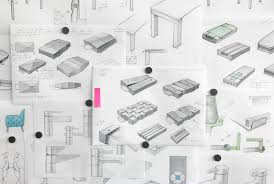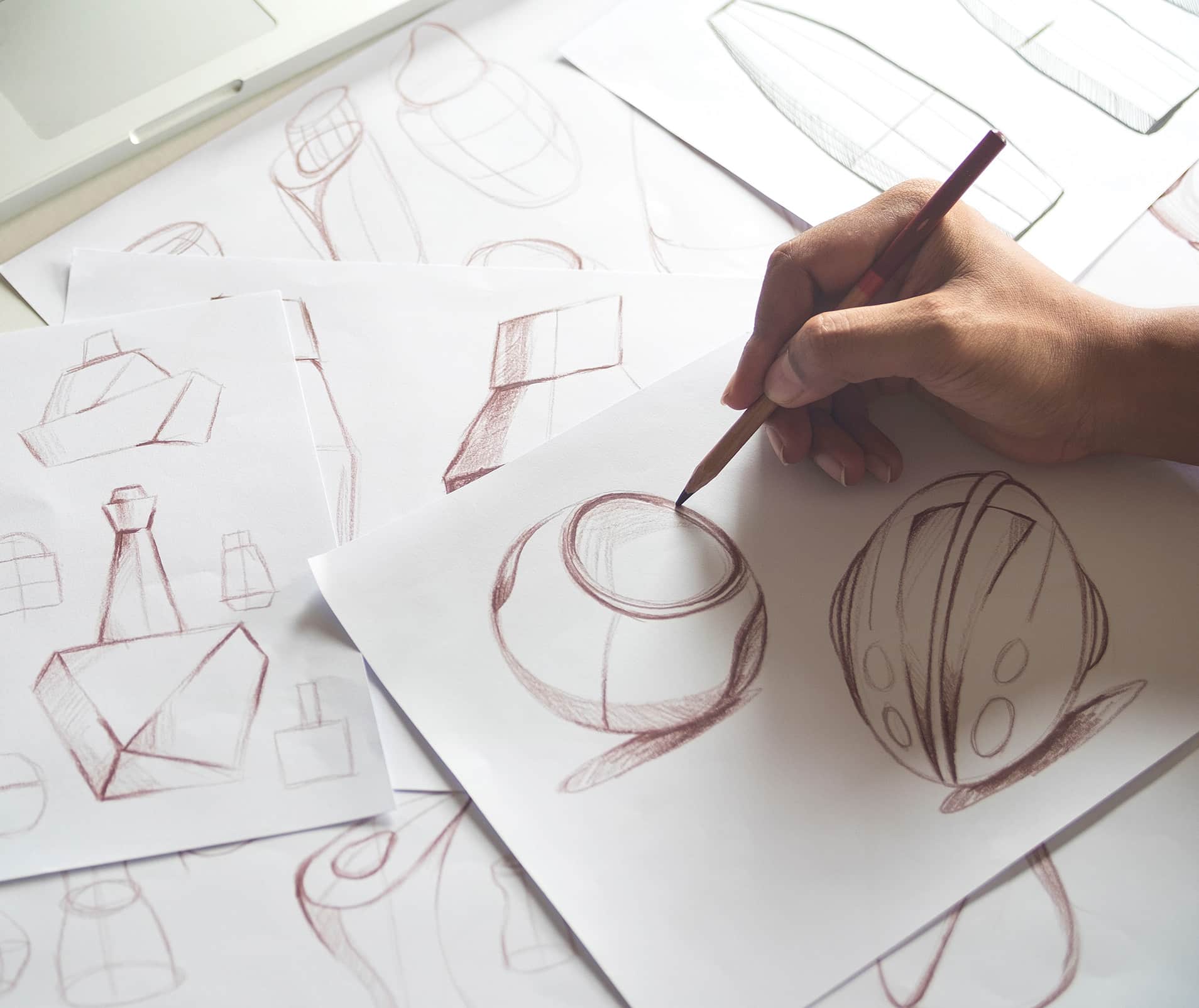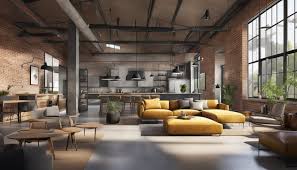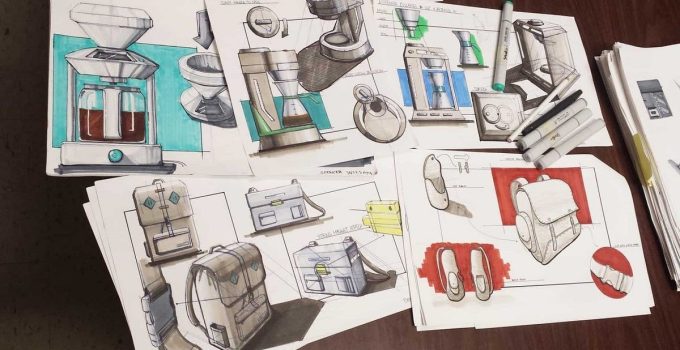Page Contents
ToggleIndustrial design plays a crucial role in shaping the world around us. From the gadgets we use daily to the furniture we rely on for comfort, industrial design focuses on blending functionality with aesthetic appeal. This discipline combines art, science, and technology to create innovative products that enhance user experiences and meet market demands. Let’s delve deeper into this fascinating field, its history, principles, and its role in contemporary society.
The Essence of Industrial Design

At its core, industrial design is about problem-solving. Designers aim to create products that are not only visually appealing but also practical, sustainable, and user-friendly. The process involves extensive research, brainstorming, prototyping, and testing to ensure the final product meets the intended objectives.
Industrial designers work closely with engineers, manufacturers, and marketing teams to ensure their designs can be produced efficiently and appeal to target audiences. This multidisciplinary approach highlights the collaborative nature of design.
Historical Roots of Industrial Design
Industrial design emerged during the Industrial Revolution, a period marked by rapid advancements in manufacturing and technology. The mass production of goods created a need for products that were not only functional but also attractive to consumers. Early pioneers in the field, such as Peter Behrens and Raymond Loewy, emphasized the importance of aesthetics in industrial production.
Behrens is often regarded as one of the first designers, introducing a unified design approach that combined functionality and beauty. His work with AEG, a German electrical company, set a standard for integrating design into branding and product development.
Raymond Loewy, known as the “Father of Industrial Design,” popularized the concept of “MAYA” (Most Advanced Yet Acceptable). This principle focused on pushing boundaries in design while ensuring products remained familiar enough for consumers to adopt easily.
Key Principles of Industrial Design
Industrial design is guided by several principles that ensure products are not only functional but also user-friendly and visually appealing. Some of these principles include:
- Functionality
Products must serve their intended purpose effectively. Designers prioritize usability, ensuring that their creations are intuitive and easy to use. - Aesthetics
Visual appeal is a critical aspect of industrial design. Products should be pleasing to the eye, aligning with contemporary trends and consumer preferences. - Ergonomics
Comfort and ease of use are essential. Designers consider human factors, such as hand grip, posture, and accessibility, to enhance the overall user experience. - Sustainability
In an era of environmental consciousness, designers focus on creating products that minimize waste, use sustainable materials, and are energy-efficient. - Innovation
Staying ahead of the curve requires a commitment to innovation. Designers constantly explore new materials, technologies, and design methodologies to create groundbreaking products.
The Role of Technology in Industrial Design

Technological advancements have significantly influenced the field of industrial design. Modern designers rely on sophisticated tools and software to bring their ideas to life. Computer-aided design (CAD) software, for example, allows designers to create detailed 3D models and simulations, making the prototyping process faster and more accurate.
Additive manufacturing, commonly known as 3D printing, has revolutionized the way prototypes are created. This technology enables designers to produce complex shapes and structures that were previously impossible or costly to manufacture using traditional methods.
Virtual and augmented reality tools are also becoming increasingly popular in industrial design. These technologies allow designers to visualize and test their creations in immersive environments, ensuring every detail is perfected before production begins.
Industrial Design in Everyday Life
The influence of industrial design can be seen in nearly every aspect of daily life. From smartphones and kitchen appliances to public transportation systems and urban furniture, design shapes how we interact with the world. Let’s explore a few key areas where design plays a pivotal role:
- Consumer Electronics
Smartphones, laptops, and wearable devices owe their sleek designs to industrial designers. The focus on compactness, user-friendly interfaces, and aesthetic appeal has made these gadgets indispensable. - Furniture and Home Decor
Industrial design contributes to the creation of functional mariatogel and stylish furniture. From ergonomic chairs to minimalist lighting fixtures, designers blend form and function to enhance living spaces. - Automotive Design
Cars are a prime example of industrial design’s impact. Designers work on everything from aerodynamics to interior layouts, ensuring vehicles are both visually striking and comfortable to drive. - Medical Devices
Industrial design plays a critical role in developing user-friendly medical equipment. Devices such as MRI machines, prosthetics, and wearable health monitors are designed with both functionality and patient comfort in mind.
Challenges in Industrial Design

Despite its many successes, industrial design faces several challenges. One of the most pressing issues is sustainability. Designers must find ways to reduce environmental impact without compromising on functionality or cost. This involves exploring renewable materials, designing for durability, and incorporating recycling into the product lifecycle.
Another challenge is the rapid pace of technological advancement. Designers must constantly update their skills and knowledge to keep up with emerging technologies and consumer expectations. Balancing innovation with practicality remains a complex task.
Globalization has also introduced new challenges, as designers must cater to diverse markets with varying cultural preferences and needs. Creating products that appeal to a global audience while maintaining local relevance requires careful consideration and research.
The Future of Industrial Design
The future of design is bright, with endless possibilities driven by technological advancements and shifting consumer priorities. Artificial intelligence (AI) and machine learning are expected to play a more significant role, enabling designers to analyze data and predict trends with greater accuracy.
Sustainability will continue to be a key focus, with designers exploring circular economy principles and developing products that can be easily disassembled and recycled. Smart materials, which can adapt to changing conditions, will likely become more prevalent, opening up new avenues for innovation.
Industrial design is also expected to become more human-centric. Designers will prioritize inclusivity, creating products that cater to people of all abilities and backgrounds. This approach will ensure that design continues to enhance quality of life for everyone.
Conclusion
Industrial design is a dynamic and ever-evolving field that shapes the way we interact with the world. By combining creativity, functionality, and technology, designers create products that improve our daily lives and drive innovation across industries. As the field continues to adapt to new challenges and opportunities, it remains a vital force in shaping the future of design and manufacturing.




